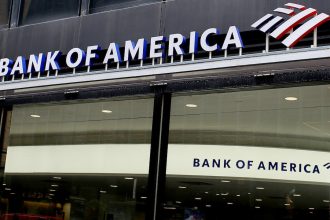Kathrin Ziegler/Getty Images
Key takeaways
- While regular checking accounts often pay no interest, some interest-bearing checking accounts – also referred to as high-yield checking accounts – do earn interest.
- Interest checking accounts may come with additional requirements such as direct deposit or a minimum number of monthly debit card transactions.
- Be sure to read the fine print before opening an interest checking account, as many only pay top rates on a smaller portion of the balance or charge fees.
Unlike savings accounts, most checking accounts don’t earn any interest on funds in the account. There are a few exceptions, though, and these are referred to as interest checking accounts.
Checking accounts are primarily used for spending rather than saving, which is why it’s less common to find a checking account that pays interest than one that doesn’t. However, high-yield checking accounts are still out there.
How do interest checking accounts work?
An interest checking account pays interest on the balance of the account, typically monthly. The account may require you to meet a minimum balance threshold or receive a specified amount in direct deposits each month to earn interest.
Like other checking accounts, interest checking accounts are primarily designed for everyday transactions. You can typically make unlimited withdrawals from them and use them to write checks and pay bills.
Though savings accounts generally earn higher yields than checking accounts, having an interest-bearing checking account allows you to earn interest on the money in all of your accounts and increase your available spending money or contribute to savings.
How interest-bearing accounts differ from other checking accounts
The biggest difference between an interest checking account and standard checking accounts is in the name: You’re actually going to earn interest on your deposit.
However, earning money isn’t necessarily automatic. You may need to be ready to deposit money to offset the cost of the account. Bankrate’s latest checking account and ATM fee study found that interest checking accounts have an average monthly fee of $15.45 — significantly higher than the average fee for noninterest checking accounts, which is $5.47.
You can get around the fee on an interest checking account, but you may need to have a lot of money in the account to do so. The average balance to avoid a monthly service fee on an interest checking account is $10,210 – the highest ever recorded in Bankrate’s research.
There are some exceptions, however. Some online banks have low or no minimum balance requirements on their checking accounts.
Who should choose interest-bearing checking accounts over traditional checking
If you regularly keep a sizable balance in your checking account, an interest-bearing checking account may be a good fit. The money is sitting there, and the interest rate will help it grow without you doing anything at all. Just be mindful of each bank’s minimum balance requirements and any fees as you compare your options.
How do interest checking accounts compare to MMAs?
Checking and money market accounts – commonly shortened to MMAs – have some similarities, such as the ability to write checks or use a debit card linked to the balance, but they’re not identical.
The biggest difference is that some banks and credit unions limit the number of certain types of transactions from a money market account. For example, you might be restricted in the number of withdrawals and electronic payments per statement period you are allowed. A checking account, on the other hand, is typically designed for limitless deposits and withdrawals provided you avoid overdrafts.
What happens if you exceed the transaction limit on an MMA? In some cases, a bank or credit union will impose an excessive transaction fee for every additional transaction. In other cases, if you exceed it on a regular basis, the bank may decide to convert your account to a traditional checking account.
Another difference between MMAs and high-yield checking accounts is that MMAs typically offer a higher APY.
Who should choose interest-bearing checking accounts over an MMA
If you’re looking for a true spending account, go with the interest-bearing checking account to avoid worrying about how many withdrawals you’re making each month. Another key consideration: how much you’re planning to keep in the account. Many money market accounts have higher minimum balance requirements.
Pros of interest checking accounts
An interest checking account will:
- Earn more interest than a traditional checking account
- Give you easy access to your cash typically without any worries about penalties for exceeding a certain number of transactions
- Protect your cash with Federal Deposit Insurance Corporation or National Credit Union Administration insurance up to $250,000 per depositor on the account, if the institution is federally insured
Cons of interest checking accounts
On the downside, interest-bearing checking accounts may:
- Have higher minimum balance requirements to waive monthly service fees than regular checking accounts
- Come with caps on the amount of money that will earn a competitive interest rate
- Require a certain number of debit card transactions and have a direct deposit to get the best yield
- Not earn as much interest as you could with some MMAs or high-yield savings accounts
Bottom line
Earning interest on your checking account can help you add to your account balance, even given the lower rates than you’d get with a savings account. To save even more, choose an account that charges no monthly service fee or lets you avoid the fee by maintaining a minimum monthly balance.
You’re going to need more than a checking account, though. Make sure that you’re keeping a chunk of your funds in a savings account or certificate of deposit (CD) where it has the potential to earn a higher yield.
Read the full article here














